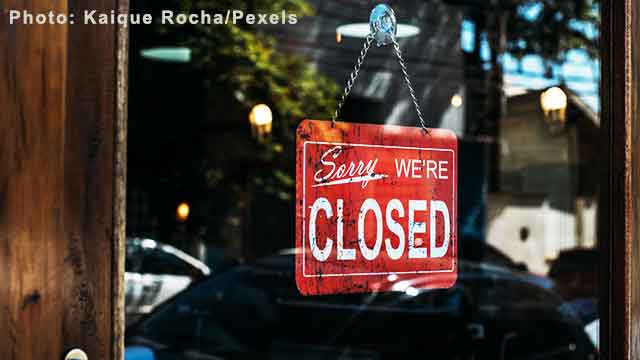The COVID-19 pandemic, which struck the world unexpectedly in late 2019, has had far-reaching consequences across various sectors. Among those significantly affected, sustainable supply chains experienced a unique set of challenges. The pandemic’s disruptions exposed vulnerabilities in traditional supply chains and emphasized the urgency of building more resilient and sustainable systems.
Disruptions in Supply Chain Operations due to the COVID-19 Pandemic
The COVID-19 pandemic triggered an unprecedented global crisis that affected nearly every aspect of human life, and supply chain operations were no exception. The disruptions were widespread and varied, impacting industries ranging from healthcare and pharmaceuticals to manufacturing, retail, and agriculture. Below are the key factors that led to disruptions in supply chain operations due to the COVID-19 pandemic:
Travel Restrictions and Border Closures: In the early stages of the pandemic, many countries implemented strict travel restrictions and border closures to control the spread of the virus. These measures significantly impacted the movement of people and goods across international borders, leading to delays in shipments, reduced availability of raw materials, and disruptions in production and distribution.
Labor Shortages and Factory Closures: As COVID-19 cases surged, many regions experienced labor shortages as employees fell sick or were required to quarantine. Several manufacturing facilities and distribution centers were forced to shut down temporarily to prevent virus transmission. These closures caused production delays, supply shortages, and a backlog in order fulfillment.
Supply Shortages and Demand Surges: The pandemic caused a surge in demand for essential goods such as personal protective equipment (PPE), medical supplies, and household essentials. Simultaneously, many manufacturers faced challenges in meeting this increased demand due to supply chain disruptions, leading to shortages in the market.
Disrupted Transportation Networks: With reduced international and domestic flights and limited ground transportation options, the transportation of goods became severely impacted. This was particularly problematic for perishable goods, high-value items, and time-sensitive shipments.
Inventory and Stockouts: Due to uncertainties surrounding the duration and severity of the pandemic, many companies faced difficulties in maintaining optimal inventory levels. Some companies resorted to panic-buying, leading to stockouts and shortages, while others were left with excess inventory due to a sudden drop in demand.
Shift in Consumer Behavior: As people adhered to social distancing and quarantine measures, there was a significant shift in consumer behavior. Non-essential businesses experienced a decline in demand as consumers focused on purchasing essential goods online. This shift led to a reconfiguration of supply chains to meet the altered consumption patterns.
Increased Costs: The pandemic-induced disruptions resulted in increased costs for businesses. Shipping costs surged due to limited transportation options and higher demand for shipping services. Additionally, stringent health and safety protocols at workplaces led to increased operational expenses.
Dependency on Single Suppliers: Many supply chains were heavily reliant on a single source for specific materials or products. The pandemic highlighted the risks of such sole sourcing practices, as disruptions in one region or country could have a cascading effect on the entire supply chain.
Information Sharing and Communication Challenges: Effective supply chain management relies on real-time information sharing and coordination among various stakeholders. However, with disruptions impacting communication channels and remote working becoming the norm, supply chain partners faced challenges in sharing critical information promptly.
Shift in Consumer Behavior during the COVID-19 Pandemic

The COVID-19 pandemic brought about significant changes in consumer behavior as people around the world adjusted to the new realities of lockdowns, social distancing, and health concerns. These shifts in consumer behavior were driven by a combination of necessity, safety concerns, and changing priorities. Below are the key aspects of the shift in consumer behavior during the COVID-19 pandemic:
Surge in Online Shopping: With physical retail outlets forced to close or operate with limited capacity during lockdowns, there was a massive surge in online shopping. Consumers turned to e-commerce platforms to purchase essential goods, groceries, and other products to minimize exposure to the virus. This shift led to a boom in the e-commerce industry and accelerated the digital transformation of businesses.
Focus on Essential Goods: During the early stages of the pandemic, panic-buying led to shortages of essential goods such as food, cleaning supplies, and personal protective equipment (PPE). Consumers prioritized purchasing these essential items to ensure their immediate needs were met, leading to a temporary drop in demand for non-essential products.
Health and Hygiene Products: As health became a top priority, there was an increased demand for health and hygiene products, including sanitizers, face masks, gloves, and cleaning supplies. This shift in demand led to a surge in production and a rise in prices for these items.
Home-Centered Activities: With stay-at-home orders and social distancing measures in place, consumers shifted their spending towards home-centered activities and products. Home improvement, home fitness equipment, streaming services, and home entertainment products saw increased demand as people looked for ways to stay engaged and entertained indoors.
Reduced Spending on Discretionary Items: Economic uncertainties and job losses led many consumers to be more cautious about their spending. Non-essential items such as fashion apparel, luxury goods, and travel-related expenses saw a decline in demand as consumers focused on essential purchases and saving for uncertain times.
Preference for Local and Sustainable Brands: The pandemic highlighted the importance of supporting local businesses and sustainable brands. Consumers became more conscious of their environmental impact and sought out products that aligned with their values, leading to a boost in sales for eco-friendly and locally sourced products.
Increased Digital Engagement: As people spent more time at home, digital engagement and online activities skyrocketed. This included a surge in social media usage, online gaming, virtual events, and video conferencing. Businesses responded by increasing their digital marketing efforts and adopting virtual platforms to engage with consumers.
Shift in Work and Lifestyle: The pandemic forced many individuals to work from home, leading to changes in lifestyle and spending habits. With fewer expenses related to commuting and dining out, some consumers redirected their savings towards home improvements, technology upgrades, and online learning.
Emphasis on Health and Wellness: The pandemic heightened awareness of health and wellness. Consumers showed increased interest in fitness equipment, health supplements, and mental health services as they sought ways to stay physically and emotionally well during challenging times.
Impact of the COVID-19 Pandemic on Sustainability Initiatives

The COVID-19 pandemic had a mixed impact on sustainability initiatives across various industries. While the immediate focus of businesses shifted to address the challenges posed by the pandemic, the long-term commitment to sustainability varied among companies. Here are the key ways in which sustainability initiatives were affected by the COVID-19 pandemic:
Pause and Reprioritization: Many companies were forced to temporarily halt or slow down their sustainability initiatives due to the urgent need to focus on immediate survival and business continuity. Budget constraints, reduced revenues, and workforce disruptions led to a reprioritization of resources, with sustainability taking a back seat in some cases.
Continued Commitment to Sustainability: Despite the challenges, some companies demonstrated unwavering commitment to their sustainability goals. They recognized that addressing environmental and social issues remained critical for their long-term resilience and reputation. These companies continued to invest in sustainable practices and maintained their sustainability commitments.
Focus on Health and Safety: During the pandemic, health and safety concerns took precedence over other sustainability priorities. Companies directed efforts toward safeguarding the health and well-being of their employees and customers. Enhanced sanitation measures, workplace safety protocols, and remote work arrangements became top priorities.
Supply Chain Resilience: The disruptions caused by the pandemic highlighted the need for resilient and sustainable supply chains. Some companies recognized that sustainability and resilience were interconnected and began incorporating sustainability criteria in supplier selection and risk assessment to mitigate future disruptions.
Impact on Renewable Energy and Emissions Reduction: The pandemic affected the renewable energy sector differently. While some renewable projects faced delays due to construction disruptions, others experienced accelerated growth as governments and businesses recognized the importance of transitioning to cleaner energy sources. Additionally, the pandemic temporarily reduced global emissions due to reduced travel and economic activity.
Importance of Stakeholder Engagement: The pandemic underscored the importance of engaging with stakeholders, including employees, customers, communities, and investors. Companies that effectively communicated their sustainability efforts and responded to stakeholder needs built stronger relationships and enhanced their brand reputation.
Circular Economy and Waste Management: The pandemic highlighted the vulnerabilities of linear supply chains and the importance of embracing circular economy principles. Companies explored ways to reduce waste, improve recycling practices, and adopt sustainable packaging solutions.
Remote Work and Virtual Collaboration: The shift to remote work and virtual collaboration during the pandemic opened up new possibilities for reducing carbon footprints associated with commuting and business travel. This experience led some companies to consider more flexible work arrangements to support sustainability objectives in the future.
Government Support and Policies: The pandemic influenced government priorities and policies. While some sustainability initiatives were deprioritized to address urgent health and economic concerns, other governments continued to support sustainable development through stimulus packages and policy measures.
Supply Chain Resilience and Adaptability during the COVID-19 Pandemic
The COVID-19 pandemic exposed vulnerabilities in global supply chains, emphasizing the need for greater resilience and adaptability. Supply chain resilience refers to the ability of a supply chain to anticipate, respond, and recover from disruptions effectively, while supply chain adaptability refers to the capacity to adjust and pivot in the face of unexpected changes. During the pandemic, supply chain resilience and adaptability became critical factors for businesses to maintain operations and meet customer demands. Here’s a detailed explanation of supply chain resilience and adaptability during the COVID-19 pandemic:
Identifying Vulnerabilities: The pandemic highlighted weak links in supply chains, such as overreliance on a single supplier or region. Companies began reassessing their supply chain networks to identify vulnerabilities and understand potential risks during future disruptions.
Diversification of Suppliers: To enhance resilience, companies started diversifying their supplier base geographically and across industries. This strategy allowed businesses to have multiple options to source critical materials or components, reducing the impact of localized disruptions.
Near-Shoring and Regionalization: The pandemic led to a reconsideration of global supply chains, with a growing interest in near-shoring and regionalization. Companies sought to establish production facilities closer to their end markets to reduce lead times and transportation risks.
Agile Inventory Management: The pandemic prompted a shift in inventory management practices. Companies focused on maintaining strategic safety stock levels for essential items while optimizing inventory turnover for non-essential goods. This approach allowed them to respond quickly to changes in demand.
Collaboration and Information Sharing: Supply chain resilience was enhanced through improved collaboration and information sharing among stakeholders. Businesses and suppliers communicated more frequently to coordinate responses to disruptions and share insights into market conditions.
Digital Transformation: The pandemic accelerated the adoption of digital technologies in supply chain management. Cloud-based platforms, artificial intelligence, and data analytics helped businesses gain real-time visibility into their supply chains, enabling better decision-making and risk management.
Flexibility in Logistics: Companies adopted flexible logistics solutions to adapt to changing demand patterns and transportation constraints. Some businesses explored alternative transportation modes or worked with multiple carriers to ensure smooth operations.
Contingency Planning: The pandemic underscored the importance of contingency planning. Companies developed robust contingency plans to anticipate potential disruptions, enabling them to act swiftly and minimize the impact on their supply chains.
Supplier Relationships and Resilience Assessments: Building strong relationships with suppliers became crucial during the pandemic. Many companies conducted resilience assessments of their suppliers to evaluate their capacity to handle disruptions and ensure continuity.
Focus on Customer-Centricity: Supply chain adaptability was influenced by a customer-centric approach. Companies listened to customer feedback, adjusted product offerings, and optimized distribution strategies to meet changing consumer preferences.
Redesigning Production Processes: Some businesses redesigned production processes to accommodate social distancing guidelines and worker safety measures. This adaptation ensured continuity while prioritizing employee well-being.
Accelerated Digital Transformation of Sustainable Supply Chain

The COVID-19 pandemic accelerated the digital transformation of sustainable supply chains as businesses sought innovative ways to cope with disruptions and adapt to changing market dynamics. The crisis highlighted the limitations of traditional supply chain models and emphasized the need for increased efficiency, transparency, and resilience. Here’s how the pandemic accelerated digital transformation in sustainable supply chains:
Online Collaboration and Communication: With remote work becoming the norm, supply chain professionals relied heavily on digital communication tools and collaboration platforms. Virtual meetings, cloud-based file sharing, and real-time communication facilitated seamless coordination between suppliers, manufacturers, and distributors, enhancing the transparency and efficiency of supply chain operations.
Enhanced Supply Chain Visibility: The pandemic exposed the importance of real-time visibility into supply chain activities. Digital technologies, such as Internet of Things (IoT) devices, RFID tags, and GPS tracking, provided accurate and timely data on inventory levels, shipment status, and production processes. This heightened visibility enabled businesses to identify potential disruptions early and respond proactively.
Data Analytics and Predictive Modeling: Data analytics played a crucial role in understanding and predicting supply chain disruptions. Machine learning algorithms and predictive modeling helped businesses anticipate changes in demand patterns, optimize inventory levels, and identify alternative sourcing options during the pandemic.
E-Commerce and Direct-to-Consumer (D2C) Channels: The surge in online shopping during the pandemic prompted businesses to pivot towards e-commerce and D2C sales models. Digital platforms enabled direct interactions with consumers, reducing dependency on traditional retail channels and enabling sustainable products to reach a wider audience.
Resilient Digital Marketplaces: Digital marketplaces and platforms emerged as essential tools to connect buyers and sellers, especially during supply chain disruptions. These marketplaces allowed businesses to quickly identify alternative suppliers and diversify sourcing options, promoting supply chain resilience.
Sustainable Sourcing and Traceability: Digital technologies facilitated greater traceability and transparency in sustainable sourcing. Blockchain technology, for instance, allowed businesses to track the origins of raw materials, ensuring compliance with ethical and sustainable sourcing practices.
Remote Quality Control and Audits: Social distancing measures made in-person quality control and audits challenging. Digital solutions, such as remote inspections and digital audits, enabled businesses to maintain oversight of suppliers and ensure compliance with sustainability standards.
Sustainable Packaging Solutions: The shift to online shopping highlighted the importance of sustainable packaging. Digital tools assisted in the design and implementation of eco-friendly packaging solutions, reducing the environmental impact of product packaging.
Leveraging AI for Supply Chain Optimization: Artificial intelligence (AI) applications, such as demand forecasting, inventory optimization, and route planning, helped businesses streamline supply chain processes and reduce waste. These AI-driven solutions aligned supply and demand, minimizing the carbon footprint of supply chain operations.
Digital Documentation and Compliance: The pandemic encouraged the adoption of digital documentation and compliance management systems. Digital platforms for regulatory compliance, certifications, and sustainability reporting streamlined administrative tasks and reduced the reliance on paper-based processes.
Sustainable Packaging and Waste Management

The COVID-19 pandemic has had significant implications for sustainable packaging and waste management practices. While the pandemic led to an increase in certain types of waste, it also raised awareness of the importance of sustainable practices in managing waste and packaging materials. Here’s how the COVID-19 pandemic has influenced sustainable packaging and waste management:
Surge in Single-Use Plastics: With heightened health and safety concerns during the pandemic, there was a surge in the use of single-use plastics, such as disposable gloves, masks, and food containers. This led to an increase in plastic waste, posing challenges for waste management and environmental conservation.
Challenges in Recycling: The increased use of single-use plastics and changes in consumer behavior disrupted recycling systems. Collection and processing facilities faced challenges in managing higher volumes of waste, and some recycling programs were temporarily suspended due to health and safety concerns for workers.
Focus on Hygienic Packaging: The pandemic highlighted the importance of hygienic packaging for food and healthcare products. Consumers sought packaging that offered protection and safety during transport and delivery. This led to increased demand for packaging that is not only hygienic but also environmentally sustainable.
Shift to E-Commerce Packaging: With the closure of physical stores and increased reliance on e-commerce, there was a surge in packaging waste from online orders. Businesses and consumers embraced sustainable packaging alternatives to reduce the environmental impact of e-commerce.
Sustainable Packaging Innovations: The pandemic accelerated the development and adoption of sustainable packaging solutions. Many companies explored alternatives to single-use plastics, such as biodegradable and compostable materials. Additionally, reusable packaging models gained traction as businesses sought to minimize waste.
Government Initiatives: Governments and regulatory bodies in various countries recognized the need for sustainable waste management practices during the pandemic. Some governments introduced or strengthened regulations to promote sustainable packaging, recycling, and waste reduction.
Increased Consumer Awareness: The pandemic led to increased awareness among consumers about environmental issues and waste management. Many people became more conscious of their individual impact on the environment and sought out sustainable products and packaging.
Circular Economy Initiatives: The pandemic highlighted the importance of adopting circular economy principles to reduce waste and promote recycling. Businesses explored circular supply chain models that encourage the reuse and recycling of materials, reducing the reliance on virgin resources.
Sustainable Supply Chains: Companies realized the importance of sustainability throughout the supply chain, including packaging and waste management. Businesses sought suppliers that offer sustainable packaging options and incorporate waste reduction practices in their operations.
Opportunities for Collaboration and Innovation in Sustainable Supply Chain

The COVID-19 pandemic has created opportunities for collaboration and innovation in sustainable supply chains as businesses, governments, and stakeholders recognized the importance of building more resilient and environmentally conscious systems. Here are the key ways the pandemic has fostered collaboration and innovation in sustainable supply chains:
Supply Chain Resilience Partnerships: The pandemic highlighted the vulnerabilities of supply chains, prompting companies to collaborate with suppliers, manufacturers, and logistics partners to build more resilient supply networks. These partnerships focused on risk assessment, contingency planning, and the adoption of sustainable practices to ensure continuity during disruptions.
Circular Economy Initiatives: The pandemic accelerated the adoption of circular economy principles, which emphasize resource efficiency and waste reduction. Businesses collaborated to implement circular supply chain models, incorporating practices such as product reuse, recycling, and remanufacturing to minimize environmental impact.
Responsible Sourcing Practices: The pandemic underscored the importance of responsible sourcing to ensure the reliability and sustainability of supply chains. Companies collaborated with suppliers to promote ethical practices, reduce deforestation, and eliminate forced labor, aligning their supply chains with sustainable values.
Transparent and Ethical Supply Chains: Stakeholders demanded greater transparency in supply chains during the pandemic. Businesses collaborated with suppliers to provide transparent information about their sourcing, manufacturing processes, and environmental impacts to build trust and accountability.
Innovation in Last-Mile Delivery: With the rise in e-commerce during lockdowns, businesses explored innovative last-mile delivery solutions to reduce emissions and enhance efficiency. Collaborations between companies and logistics providers led to the adoption of greener transportation options, such as electric vehicles and sustainable packaging.
Digital Traceability and Blockchain: Collaborative efforts in adopting digital traceability technologies, such as blockchain, have gained momentum during the pandemic. These technologies enable end-to-end visibility in supply chains, ensuring the authenticity of sustainable claims and supporting responsible sourcing efforts.
Public-Private Partnerships: Governments and businesses collaborated through public-private partnerships to address supply chain disruptions and support essential industries. These partnerships provided resources, infrastructure, and incentives to promote sustainable practices and strengthen supply chain resilience.
Innovation in Packaging: The pandemic encouraged collaborations between companies and packaging manufacturers to develop sustainable packaging alternatives. This led to the adoption of compostable materials, reusable packaging solutions, and reduced plastic usage in response to the increased demand for e-commerce.
Flexibility in Supplier Relationships: Businesses collaborated closely with suppliers to enhance flexibility in response to changing market demands and disruptions. Such collaborations allowed for efficient adjustments to production schedules and inventory management, minimizing waste and optimizing resources.
FAQ’s:
-
How did the COVID-19 pandemic impact supply chain operations?
The pandemic led to disruptions in supply chain operations due to travel restrictions, labor shortages, increased demand for essential goods, and reduced consumer spending on non-essential items.
-
How did the pandemic influence consumer behavior?
The pandemic caused a shift in consumer behavior, with increased online shopping, focus on essential goods, and a preference for local and sustainable brands.
-
What happened to sustainability initiatives during the pandemic?
Some companies temporarily deprioritized sustainability initiatives to address immediate challenges, while others maintained their commitment to sustainability despite the crisis.
-
How did the pandemic affect supply chain resilience and adaptability?
The pandemic highlighted the need for supply chain resilience and adaptability, leading to the diversification of suppliers, regionalization of production, and adoption of digital technologies.
-
How did the pandemic accelerate digital transformation in sustainable supply chains?
The pandemic accelerated digital transformation in sustainable supply chains through increased online collaboration, enhanced supply chain visibility, data analytics, e-commerce adoption, and AI-driven optimization.
